Star Wars Episode V: The Empire Strikes Back (1980)
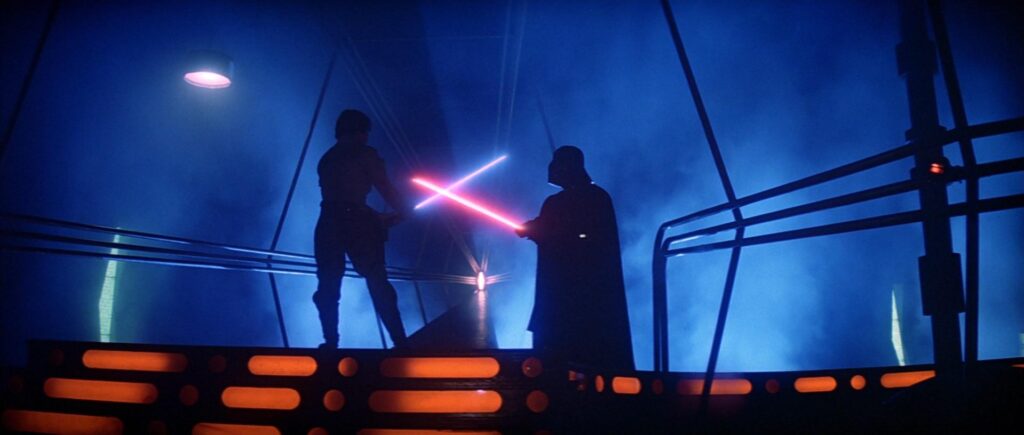
DIRECTOR: Irvin Kershner
CAST: Mark Hamill, Harrison Ford, Carrie Fisher, Billy Dee Williams, Peter Mayhew, Anthony Daniels, Kenny Baker, Alec Guinness, Frank Oz (voice), David Prowse, James Earl Jones (voice)
REVIEW:
While 1977’s Star Wars (later rebranded as Star Wars Episode VI: A New Hope) was a surprise box office phenomenon, by the time the sequel rolled around three years later, Star Wars now already had a passionate fanbase waiting eagerly for any news of the next installment. The Empire Strikes Back was worth the wait, not only advancing the stories of the three principal characters and sending them on new adventures, but going into deeper, darker themes and interjecting one of the greatest shocking surprise twists in all of movie history. Empire defies the “middle chapter” curse. In fact, of the original trilogy, this is easily the strongest, most accomplished, and most mature motion picture.
We pick up a while after the events of A New Hope. That movie ended with a triumphal fanfare, but here our heroes are on the run (as hinted by the title). The Death Star has been destroyed, but Imperial forces led by the sinister Darth Vader (David Prowse, voice of James Earl Jones) have chased the rebels across the galaxy. Our three main heroes, Luke Skywalker (Mark Hamill), Princess Leia Organa (Carrie Fisher), and Han Solo (Harrison Ford), have taken up shelter in a rebel base on the ice world of Hoth. But when Vader hunts them down, a large-scale battle ensues, forcing our heroes to scatter to the winds. Han and Leia, along with Han’s trusty co-pilot Chewbacca (Peter Mayhew), and the droids C-3PO and R2-D2 (Anthony Daniels and Kenny Baker), escape aboard the Millennium Falcon, chased by the Imperials into an asteroid field and eventually making their way to the floating cloud city of Bespin, where Han reunites with an old friend Lando Calrissian (Billy Dee Williams), who may not be entirely trustworthy. Meanwhile, Luke goes on a journey of his own, directed by a specter of his late mentor Obi-Wan (Alec Guinness) to the swamp planet Dagobah, where he begins his Jedi tutelage under the ancient and wizened, pint-sized but powerful Jedi Master Yoda (voiced by Frank Oz).
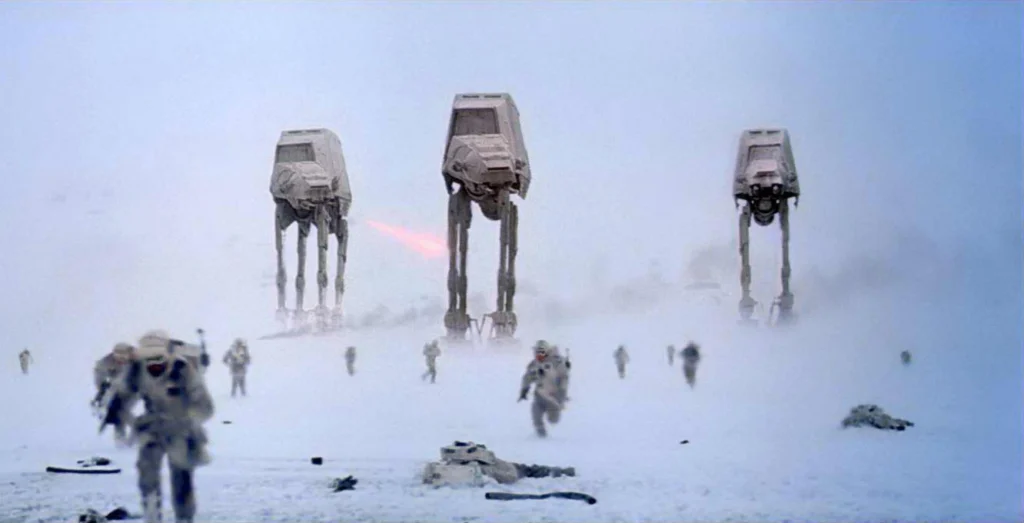
The Empire Strikes Back is engrossing from start to finish, in a way that easily surpasses the modest narrative of its predecessor. The film is better-paced and supplies one memorable sequence after another: Luke trapped in a cave by a monster that bears a suspicious resemblance to the Abominable Snowman, the large-scale Battle of Hoth (one of two centerpiece sequences of the movie), a chase through an asteroid field, a brief respite on Cloud City that turns into a trap, a cave on Dagobah in which Luke confronts his worst nightmares, and a lengthy lightsaber battle between Luke and Darth Vader that leads to a revelation that shocked audiences in 1980 and has been one of the greatest movie surprise twists of all time ever since. Compared to Empire, A New Hope looks almost small and primitive. Everything here is bigger, bolder, and better. With a more pedigreed director, Irvin Kershner, commanding an expanded budget, the visual effects have gone up a notch (or several notches). For all its destructive firepower, the Death Star wasn’t all that visually interesting; it basically looked like a big steel ball that slowly floated around. Empire packs a much more impressive arsenal. The ice world of Hoth is a welcome change from the (fairly dull) barren desert of Tatooine. The towering four-legged Imperial Walkers bestriding the icy plains are as imposing as they are impractical, and the Battle of Hoth is far more visually impressive than Luke’s Death Star bombing run in the first movie. The floating cloud city of Bespin is a more visually striking environment than any place we saw in A New Hope.
And Empire’s advances are not only visual, but also in terms of narrative and character. By Star Wars standards, this is a dark movie that takes things to deeper, more adult places than anywhere A New Hope ever went. At times, the narrative trajectory goes in expected directions—-Luke training to become a Jedi—-but it also throws some curveballs. Most fans believed after A New Hope that the Luke/Han/Leia love triangle would be resolved with our “main” hero Luke getting the princess, but Empire doesn’t take long to begin to make it obvious that Luke is the odd man out. The dialogue, while still corny at times, is stronger than in A New Hope, possibly because the screenplay was written by Leigh Brackett and Lawrence Kasdan, working off Lucas’ story outlines and copious notes. The bickering and romantic tension between Han and Leia has some snappy exchanges that feel natural as the scoundrel and the princess clash in enjoyable love/hate fashion. The movie is tonally well-balanced, smoothly balancing humor, action, drama, and moments of darkness without ever feeling uneven, all building up to the central confrontation of the movie—-Luke versus Vader—-which is much better than Vader’s rather lame “duel” with Obi-Wan in A New Hope (courtesy of the involvement of legendary Hollywood stuntman, fight double, and swordsman Bob Anderson, who replaced David Prowse as the man in the costume for the more extensive fight scenes), and comes to a shocking climax, before we leave off on a comparatively grim and downbeat conclusion with our heroes in a far more precarious and uncertain place than they were in the victorious celebration of A New Hope.
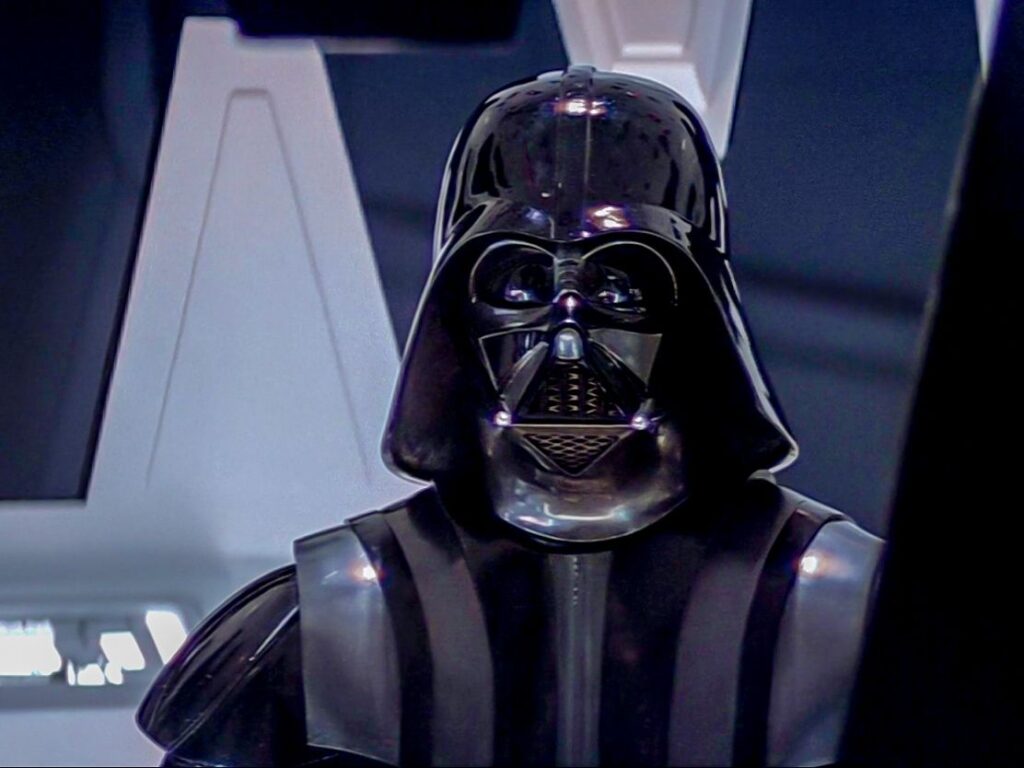
The characters are stronger this time around than the simple archetypes they were in their first outing. Luke has to grapple with more darkness—-external, and possibly internal as well—-than anything the plucky farmboy had to face in his first adventure. Han and Leia develop their own plotline. And Darth Vader, who was a glorified enforcer in the original movie, fully comes into his own here as the series’ iconic “big bad”. Vader is in top form here, striding through the movie with cape billowing behind him, destroying the rebel base, capturing and torturing Han and Leia, dueling Luke and leaving him with a devastating truth, issuing dire pronouncements in the inimitable stentorian tones of James Earl Jones, and—-in a darkly amusing running joke—-showing a recurring penchant for issuing sudden and fatal demotions to any Imperial officer he deems to have failed him. Compared to Vader here, the Vader in the original movie feels retroactively diminished in hindsight. Empire, more than any other installment of the original trilogy, is responsible for Vader’s status as an iconic screen villain.
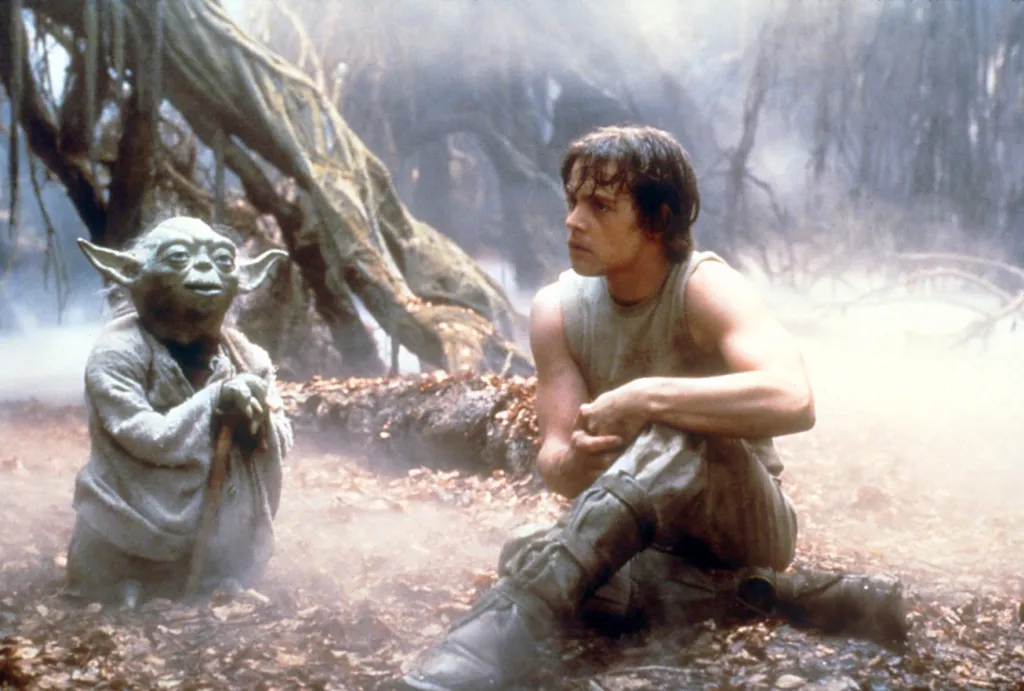
Empire also introduces three significant new characters. The most notable is Yoda, a muppet operated and voiced by Frank Oz. Oz and the filmmakers worked hard to make Yoda convincing, and indeed he is, and not only as a special effect, but as a character. Consider a scene like Luke’s premature departure from Dagobah, and the expression on Yoda’s wizened face: disappointment, sadness, a hint of pride. In fact, in the depth and range of emotions Yoda projects, the puppet might give the best performance in the movie. We also get Billy Dee Williams’ Lando Calrissian, giving a dash of diversity and representation for people of color in a galaxy that had to this point appeared mostly lily-white. Empire also gives us our first glimpse of the series’ ultimate overall “big bad”, Emperor Palpatine, who appears here only as a mysterious, shadowy, sinister cameo. In the original theatrical release, the Emperor was “played” by a combination of the voice of Clive Revill and a composite image of an older actress in heavy makeup and the eyes of a chimpanzee, giving the Emperor an intentionally distorted, spectral, vaguely inhuman appearance. In the mid-1990s Special Edition, among some other effects brush-ups, Lucas understandably shot new footage using Ian McDiarmid (who plays Palpatine in Return of the Jedi and the prequels), ensuring continuity across the franchise.
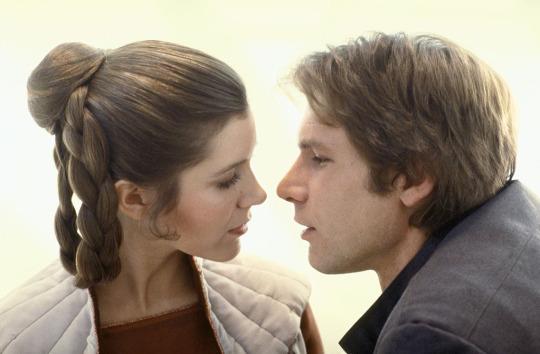
The acting is stronger than in A New Hope and the “Big Three” feel more relaxed and confident in their performances, possibly through a combination of the inexperienced stars growing into their roles and being guided by a more experienced director in Irvin Kershner (whatever can be said of him as a technical visionary, Lucas notoriously does not have a good grasp on working with actors or coaxing the best performances out of them). Mark Hamill, who gave probably the weakest performance in A New Hope, is greatly improved here, capably conveying Luke’s emotional turmoil in later scenes. Harrison Ford’s cocky swagger was already in evidence in A New Hope, but here it’s in full force, smoothing out his rough edges from his first outing as Han Solo, effectively making the smuggler-turned-rebel both scoundrelly and heroic. Carrie Fisher shows a softer, more vulnerable side to go along with her spunk, and there’s a spark between she and Ford. The romance between Han and Leia is easy to buy. Billy Dee Williams is a welcome addition as the suave, dashing Lando Calrissian. Alec Guinness, who made little secret of picking up a paycheck in A New Hope and quickly wearying of all things Star Wars, was coaxed back as a shimmering ghost to phone in some exposition.
So, how much of Empire is actually George Lucas? That question has been debated over the years, and varies depending on who you ask. While Lucas wrote the overall story outline—-which Leigh Brackett and Lawrence Kasdan fine-tuned into the final script—-some of his detractors argue he had little directly to do with the film. For his part, director Irvin Kershner downplayed his own involvement and gave much of the credit to Lucas as essentially a co-director (although Kershner is the only director officially credited). It’s likely that Empire was a collaborative project by all of the above individuals, and it may not have been as good as it is without one of the ingredients in the mix.
The Empire Strikes Back stands tall as not only the overall strongest and most accomplished installment of the original Star Wars trilogy, but also a good motion picture period. It has scope and grandeur, moments of heroism and darkness, battles and chases and swordfights, romance and humor, and a shocking twist. It’s grand, rousing space opera that delves deeper and advances both the characters and narrative in substantive, intriguing ways (the mark of a true worthy sequel that justifies its own existence). Far from being a mere sequel, it easily surpasses the original film and takes the series to deeper, darker, more grownup places. It’s a richer, meatier, more fulfilling experience. It’s often said that the middle chapter of film trilogies are the weakest links, but The Empire Strikes Back stands tall as a towering counter-example, and over forty years later, it continues to stand tall as cinematic greatness and a true classic.
* * * *